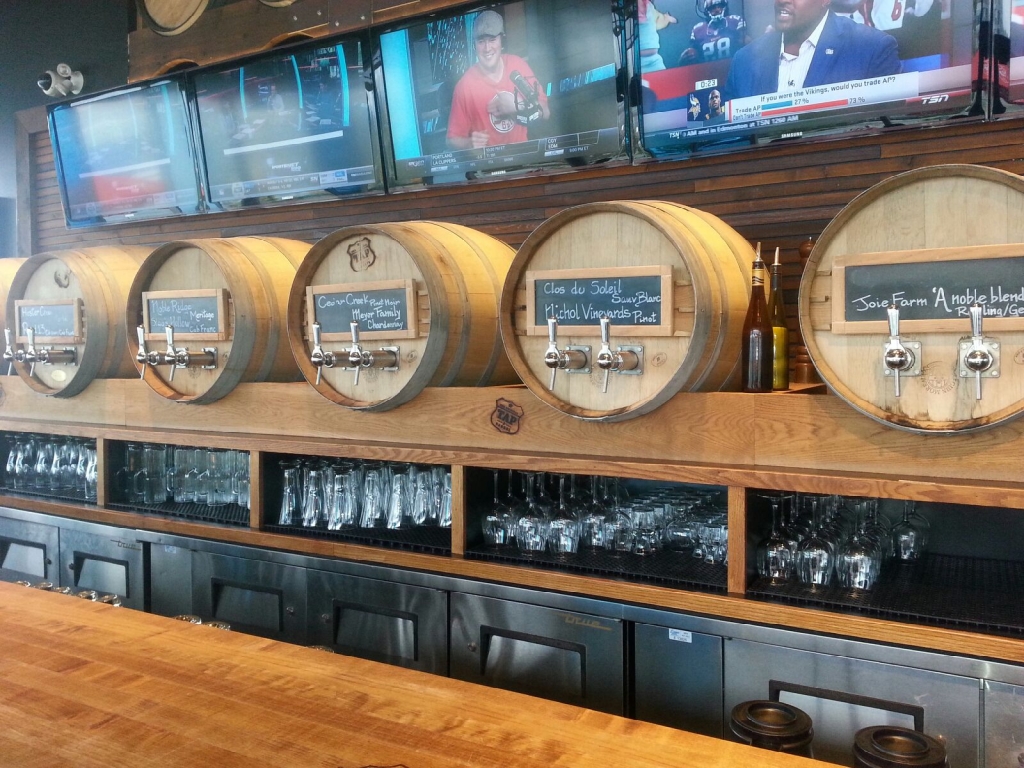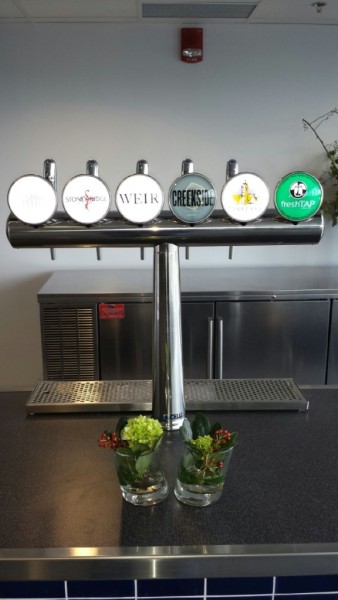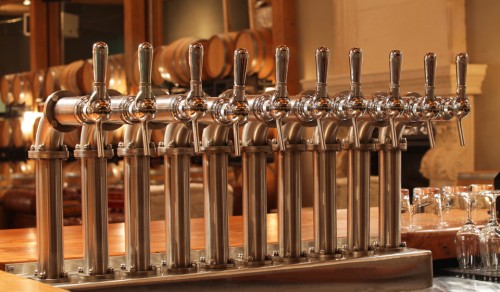
Stop me if you’ve heard this one.
Guy walks into a pub. He’s a big, burly dude and looks real thirsty. He bellies up to the bar and asks what’s on tap.
“We have Chardonnay, Riesling and a nice fruity Merlot today,” the bar tender tells the man.
“I’ll have the Chardonnay.”
It’s a scenario that’s has quickly become a reality at more and more bars and restaurants in Canada as the “wine-on-tap” movement gains momentum.
And it’s an option bars should consider.
 “Wine-on-tap is the hottest trend in restaurant wine service across North America right now,” says FreshTAP Ontario’s Cameron West, who, alongside Vineland Estate Winery’s Allan and Brian Schmidt, has brought FreshTAP to Ontario.
“Wine-on-tap is the hottest trend in restaurant wine service across North America right now,” says FreshTAP Ontario’s Cameron West, who, alongside Vineland Estate Winery’s Allan and Brian Schmidt, has brought FreshTAP to Ontario.
The sons of a third-generation winemaking family whose father founded B.C.’s Sumac Ridge Winery, the Schmidts have been pioneers and industry leaders in the Niagara wine region for over three decades.
“We knew of the high-quality standards developed and practiced by FreshTAP in B.C. for premium wine kegging and restaurant wine-on-tap installations,” said Allan Schmidt. “That made it easy for us to partner with them to expand the brand and to make that same premium service available to all of Ontario’s wineries.”
There are several advantages to serving wine on tap instead of from bottle.
• Wine will never spoil due to oxidation and will no longer be wasted due to breakage or “corked” bottles;
• Serving wine-on-tap from stainless steel kegs ensures the guest enjoys a fresh glass of wine, every single time;
• Cost of savings on labour by eliminating the need to stock bottles, handle recycling and gassing bottles, therefore increasing overall efficiencies;
• Eliminating all packaging waste and spoilage means increased margins and more profits for the restaurant or bar.
Based on current clients and licensees, FreshTAP Ontario estimates it will keg over 100,000 liters of wine in its first year (2014-2015), thereby eliminating more than 15,000 lbs of cardboard waste and diverting some 130,000 bottles, caps and corks from Ontario’s recycling and waste streams.
 Since launching in British Columbia in 2011, FreshTAP has kegged over 320,000 liters of wine, eliminated 52,201 lbs of cardboard waste and kept 429,052 bottles, caps and corks from entering that province.
Since launching in British Columbia in 2011, FreshTAP has kegged over 320,000 liters of wine, eliminated 52,201 lbs of cardboard waste and kept 429,052 bottles, caps and corks from entering that province.
In addition to its Ontario vendors, FreshTAP is also available at over 150 restaurants and public venues across Western Canada such as Vancouver’s Rogers Arena, Delta Hotels, and 14 of The Keg Steakhouse locations throughout British Columbia and Alberta.
From its 5,000-square-foot facility in Niagara, FreshTAP Ontario kegs VQA wines from Creekside Estate Winery, Henry of Pelham Estate Winery, Mike Weir Winery, Stoney Ridge, Reif Estate Winery, and Vineland Estates into 19.5L stainless steel kegs — the equivalent of 26 bottles or 130 five-ounce glasses.
Held under the gentle pressure of an inert gas, each wine is perfectly preserved from oxidation for up to eight months once tapped, ensuring that the last glass is as fresh as the first.
FreshTAP is currently featured in Toronto at popular restaurants such as Rock Lobster, Drake 150, Montage and Walhburgers, and ONE Restaurant by Mark McEwan.
Clients considering the move to tap wine have to keep in mind that start-up costs, including the kegs and taps, will take some time to recover. Once the costs are recovered, profits are greater with the wine-on-tap system.
The cost to install a tap system is anywhere from $2,000 to $3,000, depending on the number of taps and kegs needed.
It’s a solution that’s attractive for higher-volume bars and restaurants but perhaps prohibitive for the smaller venues.
Brian Schmidt, winemaker at Vineland Estates, says the potential for wine-on-tap is “unlimited.” He’s seeing the fledgling industry in Ontario alone growing by 150 kegs a month.
Schmidt only sells “premium” Ontario VQA wines for the wine-on-tap program, including Riesling, Chardonnay, Pinot Gris and Cabernet Franc and sees younger drinkers, especially, embracing keg wines because they appreciate that the process is more environmentally friendly with less packaging and manufacturing going into a glass of wine.
Note: This article first appeared in Pro Shop Magazine and has been repurposed here.






Comment here